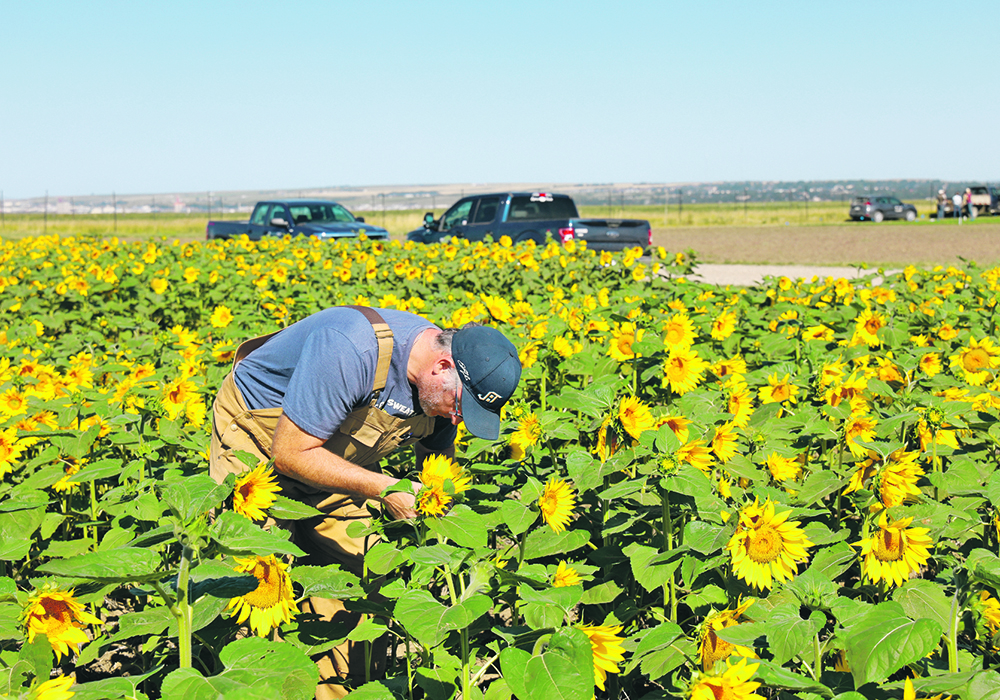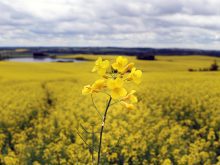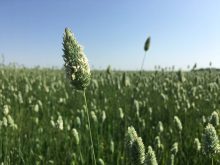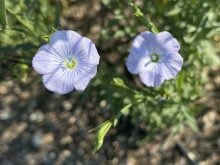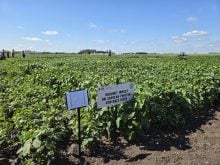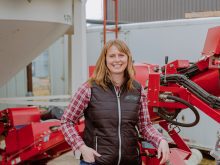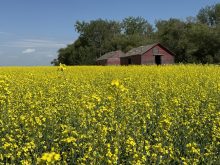The Diverse Field Crops Cluster works with camelina, carinata, canaryseed, flax, hemp, mustard, quinoa and sunflowers
After five years of research through a time that included a drought and a pandemic, the Diverse Field Crops Cluster has issued a report on its achievements.
Carol Ann Patterson, DFCC project manager, said researchers showed their resourcefulness in keeping projects going despite health restrictions.
“People were shut down for a year sometimes or with limited access to facilities,” she said.
“Somebody told me (University of Saskatchewan) people, they were working in their garages to separate seed. They literally took seed home and were working in their garages to get stuff out so they could plant. So a huge effort, I think, by everybody to work through some very challenging situations and it’s paid off.”
Read Also

Seed treatment targets flax stands
Researchers at Manitoba’s crop diversification centres are completing a study on flax seed treatments, investigating whether the products can improve crop emergence and plant stands.
The DFCC was formed to support research and development of eight specialty crops: camelina, carinata, canaryseed, flax, hemp, mustard, quinoa and sunflower. By working together, they were better able to access federal and provincial government research funding, as well as support from producer-funded sources and private industry. Ag-West Bio provided management and administrative support for the program.
DFCC research projects yielded results that are now or will soon be in the field. An example from the report are two new mustard varieties, AAC Yellow 80 and AAC Brown 18. They offer the first significant yield increase in decades — nine percent and 20 percent, respectively.
The mustard team also achieved another breakthrough: herbicide resistance.
“It was only in year four that they were able to get one plant that was resistant to Solo (a Group 2 herbicide),” Patterson said. “That in itself was a huge accomplishment. Right now, you have to remember it’s one plant, so they’re very carefully taking care of that germplasm and starting to bring it up through the breeding cycle.”
Another advance still in the works is a winter camelina that provides an oilseed alternative to fall rye. Improved spring-seeded varieties with larger seed size are ready for the field. On the agronomic side, research showed that including camelina and yellow mustard in rotations enhanced pulse crop performance in subsequent years.
Patterson said much of the research has an end-customer orientation. For confection sunflowers, this meant development focused on taste and mouth feel to appeal to European palates.
“(Processors) have been really interested in the agronomic characteristics of these bigger, longer confectionary sunflower seeds,” Patterson said. “They’ve got a bigger, rounder shoulder. This project enabled those lines to come from research that was done five, six, 10 years ago even, bringing it to fruition so that right now we’ve got processors that are very, very interested in those one or two lines.”
A newcomer to the human food market is canaryseed, which received approval for such uses in Canada and the United States in 2015. With the arrival of glabrous (hairless) varieties out of research at the University of Saskatchewan, the next steps are to develop ways to process and market the seed.
A dehulling process has been optimized and heat processing techniques explored to extend the shelf life. Other work is aimed at marketing the seed to food manufacturers, one aspect of which is to give the human food version a separate name, alpiste, to differentiate it from its birdseed cousin.
Other projects looked at livestock and companion animal markets. One study showed that hemp meal is similar to canola meal for livestock feed. Another showed that camelina oil supplements improved skin and hair health in dogs and helped modulate inflammation in horses.
Now at the end of its first five years, Patterson said two of the seven commodity groups (canaryseed and quinoa) will drop out of the cluster. The remaining players have new funding proposals to Agriculture Canada in the pipeline and hope to continue to develop their crops and market opportunities.
The full DFCC research report is available at www.dfcc.ca.



